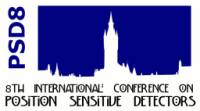Description
Applications in Astronomy and Astrophysics
Prof.
Ian McLean
01/09/2008, 13:50
Applications in Astronomy and Astrophysics
Keynote talk
The set comprising of silicon charge-coupled devices, low band-gap infrared
arrays and bolometer arrays provide astronomers with position-sensitive
photon detectors from the X-ray to the sub-mm. In recent years the most
significant advances have occurred in the near-infrared part of the spectrum
because not only have the detector formats caught up with those of CCDs but
also because the...
Dr
Christopher Saunter
(University of Durham)
01/09/2008, 14:30
Applications in Astronomy and Astrophysics
Oral Contribution
Adaptive Optics systems measure and correct dynamic optical distortions,
often atmospheric turbulence, to improve overall system performance. Such
systems have grown from their astronomical inception in 1953 to cover many
fields including ophthalmology, high power lasers, communication, optical
storage and astronomy.
There are many different systems but common to all is the need to...
Dr
Ives Derek
01/09/2008, 14:50
Applications in Astronomy and Astrophysics
Oral Contribution
Electron multiplication CCDs have been commercially available for the last few years but have yet to make wide impact in the astronomical community. They have specifically been designed to use an avalanche gain process during the serial charge transfer to give sub-electron read out noise. In all other respects they are identical to the very latest generation of CCDs. They have been used with...
Dr
Adam Woodcraft
01/09/2008, 15:10
Applications in Astronomy and Astrophysics
Oral Contribution
Sub-mm astronomy has seen an explosive growth in recent years. This has been driven by improvements in detector technology, and in particular the move from single pixel instruments to ones containing arrays of hundreds and even thousands of pixels. Sub-mm detectors are different from those used in astronomy at most other wavelengths in that they are not produced commercially. Instead,...
Lawrence Jones
(STFC Rutherford Appleton Laboratory)
01/09/2008, 15:30
Applications in Astronomy and Astrophysics
Oral Contribution
HEXITEC is a collaborative project with the aim of developing a new range of detectors for high energy X-ray imaging. High energy X-ray imaging has major advantages over current lower energy imaging for the life and physical sciences including improved phase contrast images on larger, higher density samples and with lower accumulated doses. However, at these energies conventional silicon based...

